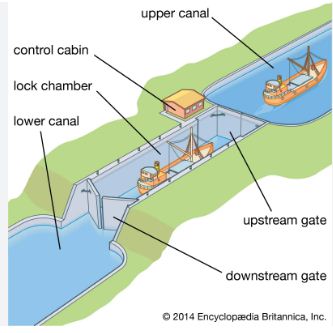November 5, 2024
Dutch gravity canal system
The Dutch gravity canal system is an impressive network of water management canals, dikes, and locks in the Netherlands designed to control water levels and manage flooding. The Netherlands, being a low-lying country with about a third of its land below sea level, relies on this system to keep the land dry and usable for agriculture, habitation, and infrastructure. The Dutch canal system, partly driven by gravity, forms a core part of the country’s extensive water management strategies.

Key Features of the Dutch Gravity Canal System
- Gravity-Based Drainage:
- The Dutch canal system uses the principle of gravity for water flow wherever possible, meaning that water naturally flows from higher ground to lower ground and eventually to the sea or larger rivers.
- Gravity is harnessed in regions where slight elevation differences allow water to be directed into channels and prevent flooding without the need for extensive pumping.
- Integration of Canals, Dikes, and Locks:
- The canal system is integrated with dikes (large embankments) and locks (gated structures) to regulate water levels in different areas.
- Dikes keep water out of low-lying areas, and locks allow controlled water transfer between canals and water bodies, ensuring that water levels are stable even during heavy rains or high tides.
- Polders and Drainage:
- The Dutch have reclaimed land from the sea, creating areas known as polders. These are low-lying tracts of land that are drained and separated from the surrounding water by dikes.
- Water in polders is often higher than the surrounding land, so gravity canals are used alongside sluices to discharge excess water when levels get too high.
- Use of Windmills and Pumps:
- While gravity is used wherever possible, Dutch canals often need support from mechanical means, especially in areas with minimal elevation difference.
- Historically, windmills were used to pump water out of polders and into drainage canals. Today, these are complemented or replaced by powerful electric and diesel pumps.
- Flood Management and Safety:
- The canal system is central to flood management in the Netherlands. When excess water from rivers or rainfall needs to be discharged, water is routed through the canal network to discharge points along the coast.
- Storm surge barriers and delta works help protect the lowlands from the North Sea’s tides, ensuring that inland areas remain dry.
- Water Quality and Ecology:
- Dutch canals are also managed for water quality, maintaining ecological balance and ensuring clean water for both people and wildlife.
- Gravity canals help maintain a natural flow that supports ecosystems within the canals, contributing to healthier aquatic environments.
Modern Innovations
The Dutch water management system is continuously updated with modern technology, including automated sluices, monitoring systems, and real-time flood forecasting. These innovations are essential for adapting to climate change, which has made sea levels rise and increased the risk of severe weather events.
Global Influence
The Dutch gravity canal and water management system is regarded as a model worldwide. The expertise developed in the Netherlands is often shared internationally, with Dutch engineers consulting on water management projects in flood-prone areas around the world.
The Dutch gravity canal system exemplifies a balance of engineering, natural principles, and innovation, showcasing how the Netherlands has successfully managed water for centuries in one of the most flood-vulnerable areas in the world.
January 30, 2025
January 20, 2025
January 14, 2025
